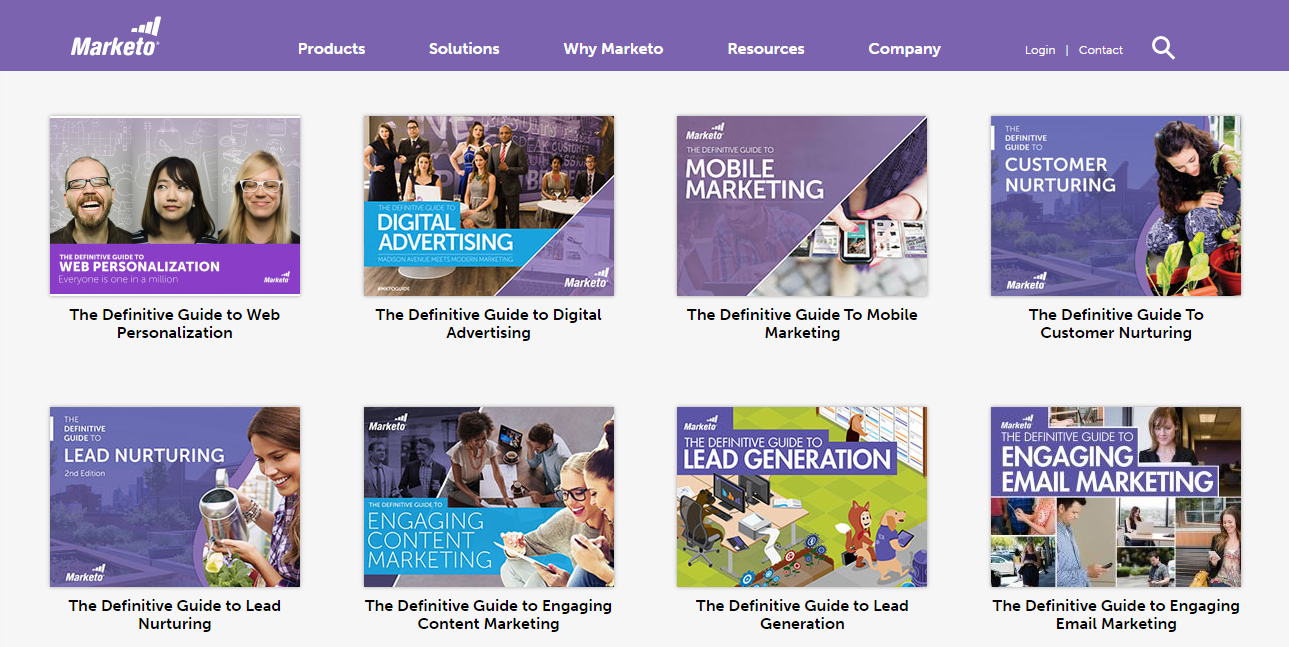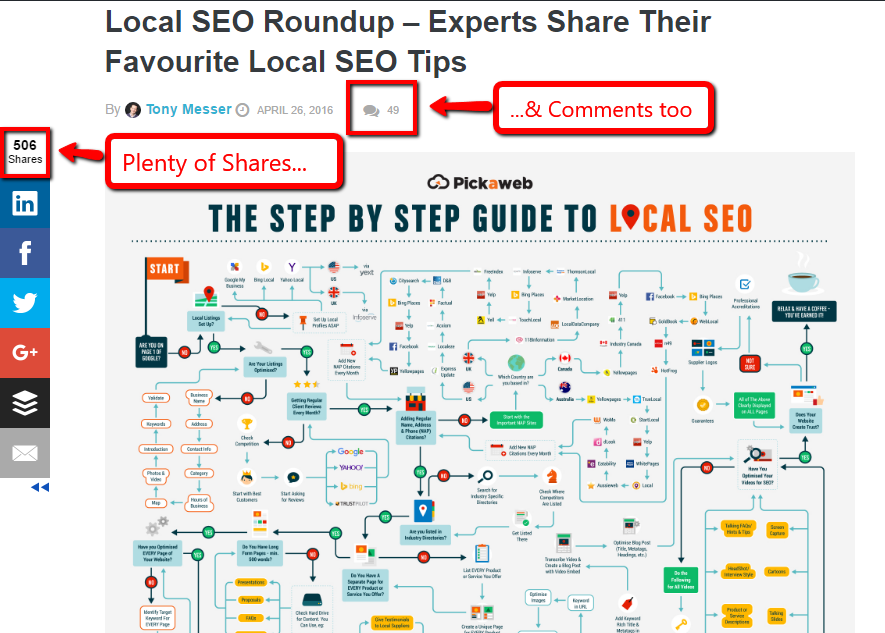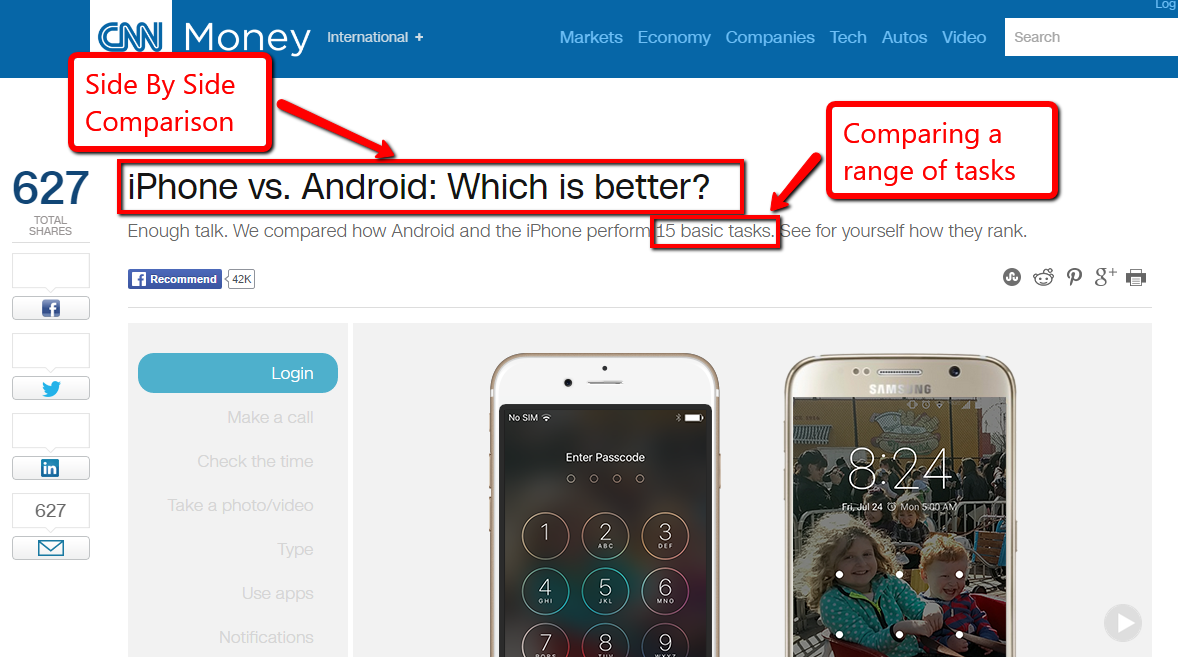Let’s be honest. Getting backlinks to an e-commerce site has never been easy.
Back in the good old days, aside from the tried and tested directory backlinks and competitor monitoring, there were a few ‘techniques’ that you could use to get backlinks.
Frankly most of these were borderline (paid links, social bookmarking or link wheels ring any bells?) but in recent years Google pressed the big red button on that kind of thing. You’ve had to adapt to the new reality. And that reality is that getting backlinks is a hard slog.
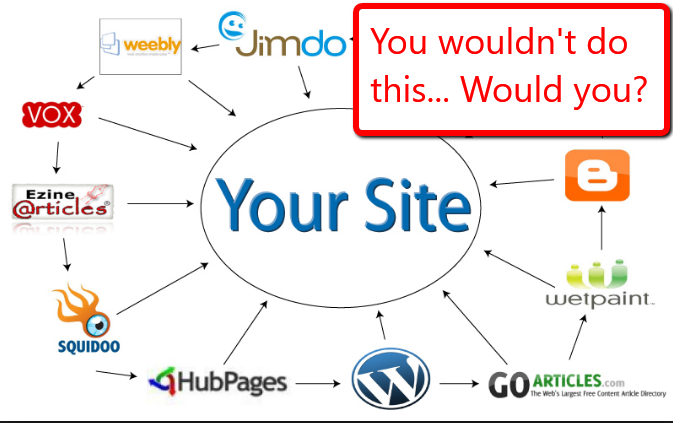
The trouble is that e-commerce is a cutthroat business. You’re up against humongous e-commerce beasts.
They’ve got teams of SEO experts and content marketing specialists. They’ve got massive pay per click budgets. They’ve got a department to handle Social Media. They’ve got a whole division for conversion rate optimization.
And you? You’ve got little old you trying to keep all of the plates spinning. It’s no wonder you feel like the mom and pop shop next to that huge shiny shopping mall.
But don’t despair. You can still do it. You just need to use tried and tested Content Frameworks and that’s what we’re going to look at today.
But first, we need to put them into perspective. To do that we need to first understand what e-commerce content marketing is.
Just What Exactly Is E-Commerce Content Marketing?
I bet you’re as sick as I am of hearing that 'Content is King.' Just saying it doesn’t magically make it so.
And neither does ‘just creating content.’ You need a plan.
E-commerce content marketing is the plan. It’s where a whole range of online disciplines converge. It includes blogging, SEO, social media and even paid search.
It's a step by step, predictable process that looks something like this:
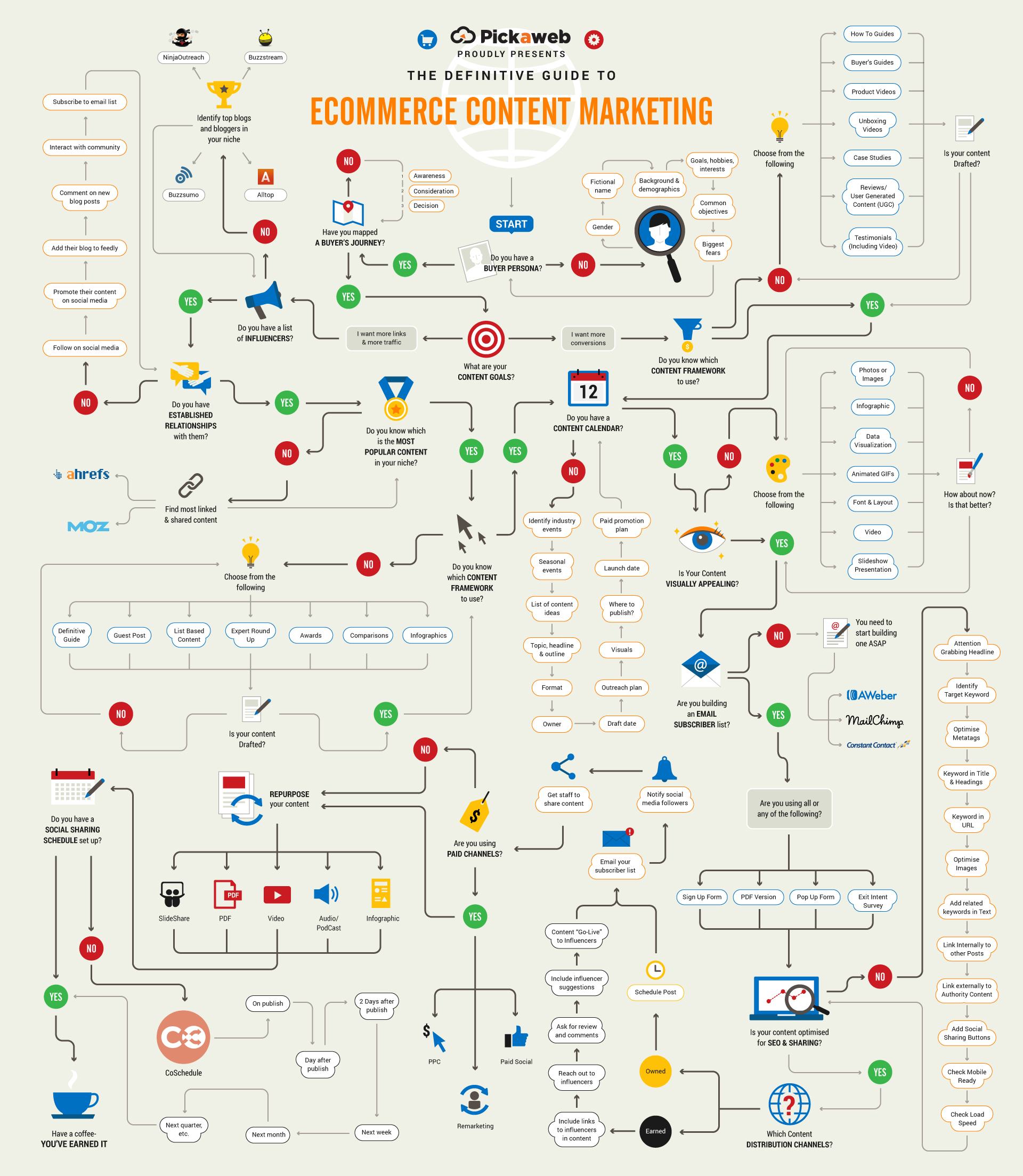 Definitive Guide To Ecommerce Content Marketing
Definitive Guide To Ecommerce Content Marketing
-
Identify your ideal client
-
Understand your content goals (traffic or conversion)
-
Outreach to influencers
-
Identify ‘best in breed’ content
-
Make your content visually appealing
-
Optimize your content
-
Publish your content
-
Promote the heck out of your content
-
Repurpose your content
-
Schedule your content for future posting
Now I know that there are a lot of moving parts involved, but one of the main things that you should focus on is using proven content frameworks and that’s what we’re focusing on today.
#1: Ultimate Guides
Nothing says that you are an authority more than a well researched, well written, completely comprehensive ultimate guide. If you prefer definitive guide then that’s fine by me.
The main thing is that someone needs to be the voice of the industry. It might as well be you.
To start with you’ll need to be prepared to invest the time, effort and money to create one. Be prepared to create a written piece of content anywhere from five thousand to twenty thousand words in length.
Obviously this depends on your market and you need to think carefully about the subject. Go too wide (Servers) and you’ll bite off more than you can chew. Go too narrow (Dell 720R servers) and you might find it hard to come up with the content. The trick is to strike the right balance (Definitive Guide to Single Processor Rack Servers 2016).
If you’ve created a buyer persona then you’ll understand your prospective customers inside out. They may be uncertain and hesitant and it’s the role of your definitive guide to inform them and guide them to the right choice.
Once you have your topic nailed you need to start to do your research and pull everything together. But don’t think that this has to be your unique voice. Think of yourself as a curator in an art gallery or museum. Your role is to pull together the best of the best.
Ideally the contributors should be your influencers. These are the people who will help you with the heavy lifting of promoting and linking to your ultimate guide. You have the option to either reach out to them in advance to ask for their input on a specific question or you can reference their existing content.
Either way, when you are ready to launch your ultimate guide, give them a heads up in advance. There’s no prescribed best practice for this. You can either send them a sneak preview or you can let them know when it’s published. Either way, get them onboard and let them know that they are featured and linked to and that you appreciate their input.
Don’t be shy to ask them to share with their audience and kick off the comments too.
Let’s be frank. To some extent this is a numbers game. You need to hustle and get your guide out there and in front of the eyeballs that matter – those of your Influencers.
Budget permitting you should automate your outreach as much as possible. Your time is valuable and you need to focus on making this part as efficient as possible.
One final note on this. Content visuals are really (really) important. An ultimate guide is an investment of your time. It would be a shame to fall short and compromise your hard work with shoddy visuals. Increasingly the social web is visual and investing in good visuals is the basic price of entry these days.
But over time your ultimate guide is going to pick up natural links, I assure you.
#2: Expert Roundup
Expert roundups are an excellent way to perform outreach, build relationships, get social shares and attract backlinks is to create an expert roundup.
This is probably not a technique that you want to build your entire strategy around but it is a really effective way to introduce yourself to industry experts and other influencers.
Expert roundups are also a lot easier to create than you might think.
The reason that you should use it sparingly is that you don’t want to be seen to be ‘hitting up’ your influencers and abusing their goodwill to piggyback on their following.
The trick is to identify a narrow issue or problem and choose two or three questions for your experts to answer. Avoid closed ‘yes’ and ‘no’ questions and something that has an obvious answer e.g. ‘Which blogging platform do you recommend?’
Conversely, also avoid questions that require a complex answer, e.g. ‘How do you use Google Analytics?’ Just look for something that allows them to pull together a quick answer that your audience will find useful, e.g. ‘What’s your number one tip for local business SEO success?’
Once you have your answers you can then format them into a list of personalized responses.
One thing you will notice is that as you start to compile your responses you will start to get a ton of ideas for additional content.
When performing outreach try to get the top names on board first. Once you have a couple of industry names committed you can just name drop that you’ve got so and so involved to add some extra incentive for others to join in.
This approach is much easier than you would expect and people are often flattered to be invited to participate. However, remember that when you are starting out, it is a numbers game to some extent. Put simply, you need to hustle. My strong recommendation is to automate the outreach process as much as you can for best results.
Finally, another angle on the classic roundup approach that I am starting to see more and more of is a hybrid definitive guide and roundup where you provide a detailed, step by step solution to a particular issue and invite input from your experts.
#3: Comparison Content
What’s the best option: Wordpress or Joomla? iPhone or Android?
As an e-commerce merchant you’ll often have a great opportunity to compare products and involve the fanbase of each.
Your prospective customers are busy. They don’t have loads of time to research all of the alternatives. They appreciate the time that you’ve spent to pull everything together for them in one place.
The beauty is that this kind of content virtually writes itself but can get some really great feedback and ultimately backlinks for you. It also extremely flexible and can be written, graphic or even animated.
Don’t limit yourself to just two products though. This approach works equally well for several products too.
As with the Expert Roundup, get the experts on board so that when you launch it you can hit the deck running.
Another important point is that comparison content is a powerful conversion tool too. By educating your prospects on the strengths and weaknesses of each product you are effectively becoming their trusted advisor. You have set the benchmarks in their minds. That’s a powerful position to be in.
#4: List Based Content
Sure, they’ve been done to death but lists are consistently popular year in year out. As an e-commerce merchant I’ll bet you’ve got a ton of stuff you could turn into popular, shareable and linkable content.
I’ll be the first to admit that you probably don’t want to build your entire content strategy around lists but they should definitely be in the mix.
Apart from anything they’re ridiculously easy to create.
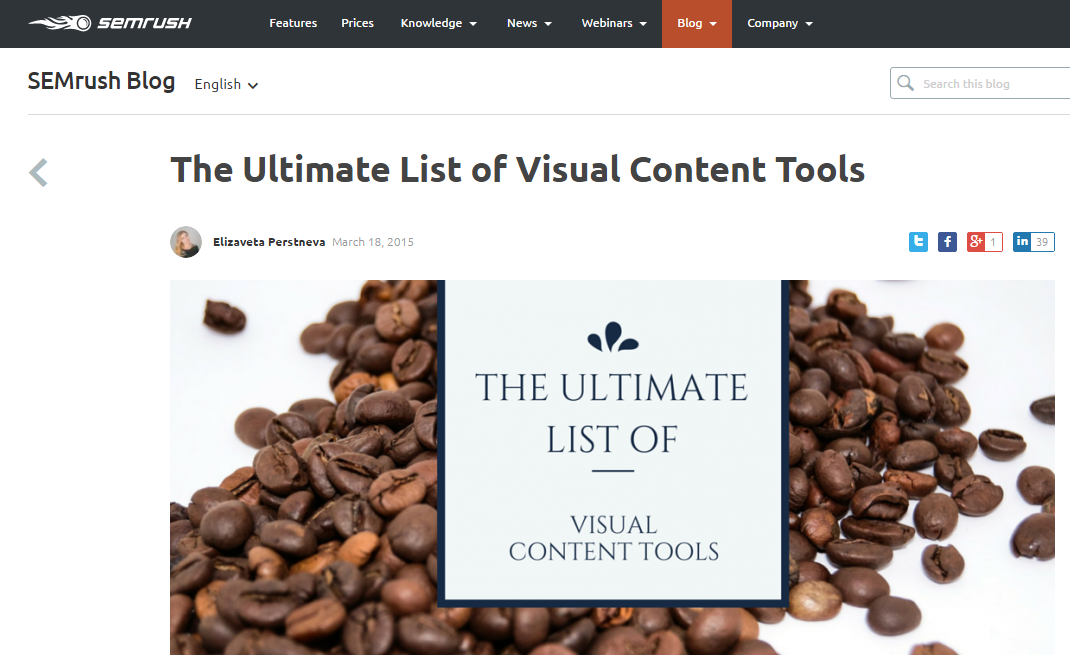 SEMRush - Ultimate List Of Visual Content Tools
SEMRush - Ultimate List Of Visual Content Tools
One of the key elements is your headline. Don’t worry too much about creating a viral headline – just remember to give them a promise and an end result. Over time you’ll get better at it.
In terms of research, Google has probably done most of this for you, so you just need to go out there and build your list.
Then you need to decide on the layout. Will it just be a list? Will you create a short summary for each item on your list? Maybe you’ll reach out to the person or company that created the item in your list.
Next comes the key part – outreach. Ideally the bulk of your outreach should be done in advance of publishing your content. A quick email along the following lines will do the trick: “Hi, I’ve put together an amazing list of X and we’re featuring you in it. Can I send it over to you for a sneak preview and to get your feedback before we go live?”
If you’re creating a list of best tools in which case your focus will be on getting some feedback or suggestions for inclusion. If it’s a list of best resources then you’ll maybe want to ask for a quote or something.
Once your list is live keep the outreach machine working. Let them know it’s live. Drop a line to ones that didn’t reply - people are busy and maybe just forgot to reply. The point is that you need to try to get on their radar as you’ve got something to offer.
#5: Guest Blogging
Reports of the death of guest blogging have been greatly exaggerated.
Certainly old school guest blogging is gone for good. That’s was just the zombie reincarnation of article marketing.
But creating content for high quality, curated and cared for online publications is always going to be a sure fire way of getting valuable backlinks.
But don’t just think in terms of getting a backlink and moving on. Try to think about how you can develop a mutually beneficial relationship. If you like working with one another then there are lots of opportunities that will arise.
.png) Keep Calm & Keep On Guest Blogging
Keep Calm & Keep On Guest Blogging
But back to the case in point. Getting guest posting gigs is a lot easier if you have something valuable to offer.
That’s where authority content like definitive guides and the other content frameworks above come into play. If you have developed a relationship with your Influencers and they liked your content then asking for a guest post opportunity is like pushing at an open door.
If they can see that the quality of your work is good, that it is well researched, offers valuable recommendations and looks visually appealing then the chances are they’ll be happy to feature your work.
Increasingly you’re going to find that outreach is going to be taking up more and more of your time. In fact current thinking is that your time should be allocated to 20 percent content creation vs 80 percent content promotion.
But when it comes to guest blogging you can be much more efficient if you focus on cementing the relationships you develop with your Influencers.
In terms of the pitch, don’t focus on yourself or your products or services. This is about their audience and their needs. Check their previous content and see what gets the best results. Look for the style that resonates best with their audience.
Don’t scrimp either – longer, well researched and more detailed posts are going to stand a far better chance of being accepted than thin, lightweight content.
Don’t think that this is just an opportunity to link to yourself. Be generous in linking to high grade content that supports your arguments and look for opportunities to link to content from the blog you are writing for.
Conclusion
Getting backlinks for e-commerce sites is hard work. The old style techniques don’t cut it these days. In fact they can harm you.
E-commerce content marketing offers a structured way of generating quality backlinks. There are several proven content frameworks that you can use so you can hit the deck running. All of them depend on consistent outreach.
Definitive guides are authority content that allow you to become a voice of the industry. Expert roundups allow you to involve the people that matter – the industry Influencers. Comparison content allows you to compare and contrast several different options and get the debate going on which is best. List based content is an evergreen format that keeps giving results and is easy to prepare.
Finally, guest blogging is alive and kicking when done with high quality, curated blogs. Other forms of content will allow you to develop the relationships with top bloggers and authority sites and increase the chances of getting accepted as opposed to pitching cold.
So are you using any of these frameworks? What’s working for you? Let us have your comments.

